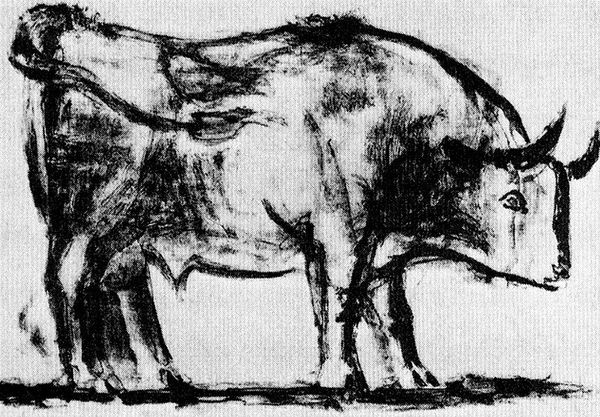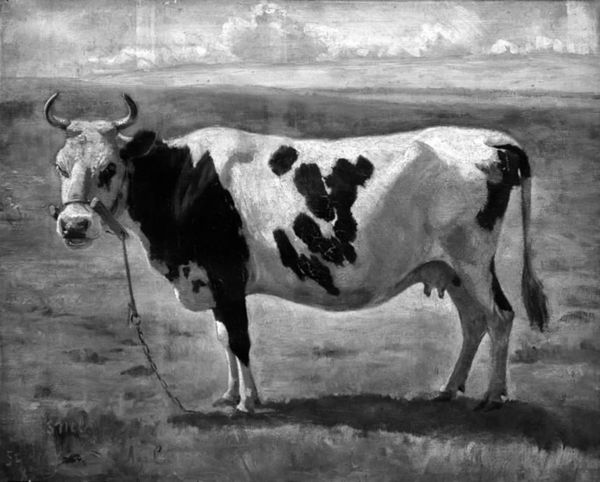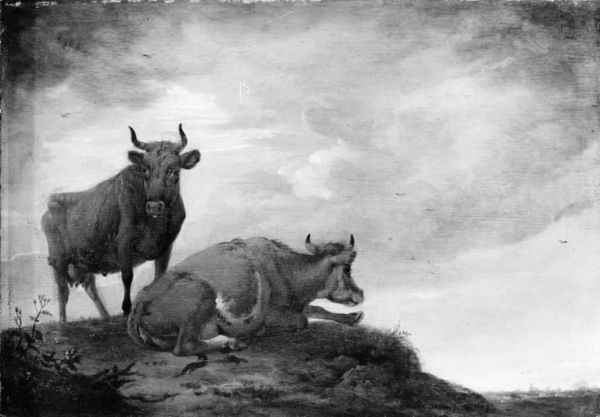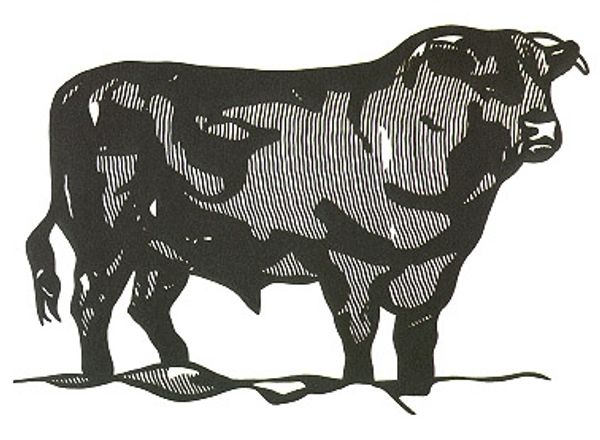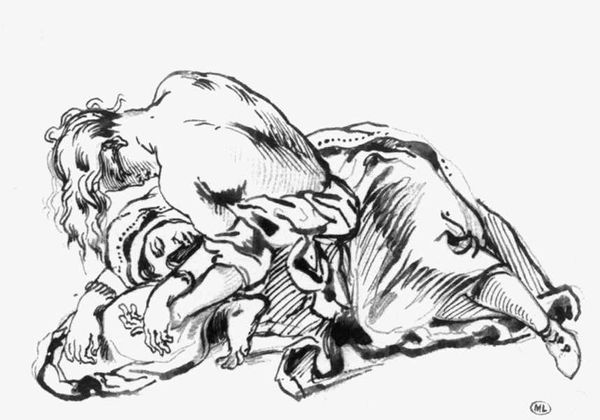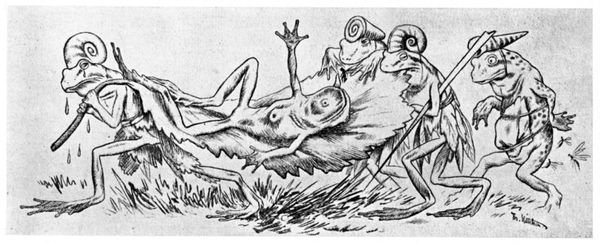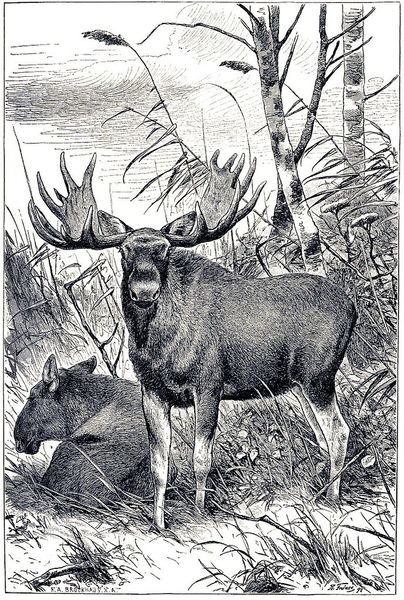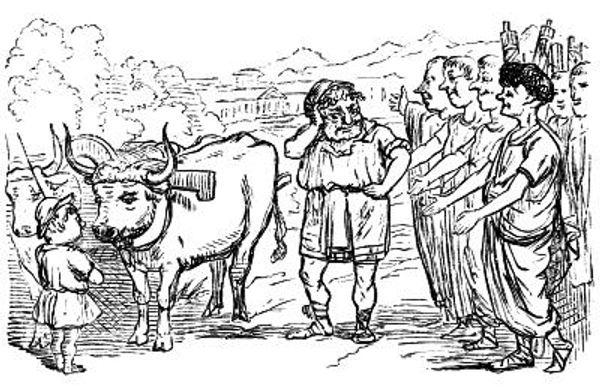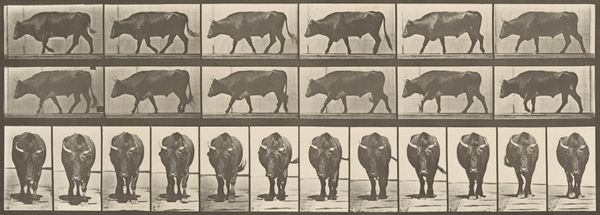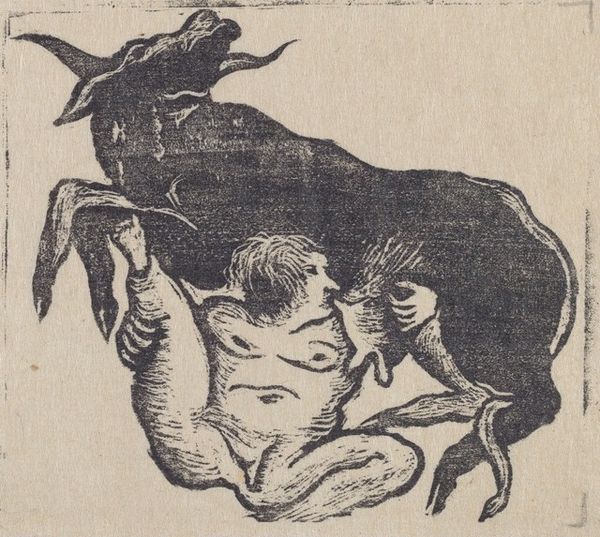
drawing, graphite
#
drawing
#
cubism
#
animal
#
figuration
#
abstraction
#
graphite
Copyright: Pablo Picasso,Fair Use
Curator: Immediately, I am struck by how Picasso, even when using such a stripped-down, almost technical style, retains the power of the bull as an iconic, mythic figure. There is still this imposing quality that comes through the simplified lines and shaded patches. Editor: The tension is palpable. I read this image in the shadow of World War II, completed in 1945. I see this as a fragmented symbol of resistance, maybe even hope, pulled apart but defiantly standing in the aftermath. Curator: Indeed. The lithograph, "Bull (plate IV)", reduces the animal to an essence through successive stages of abstraction. Consider how key symbolic elements are distilled—the curve of the horns, the powerful haunches, everything streamlined into potent signifiers of bullness. What does that communicate? Editor: And to consider this bull divorced from context would be a disservice, wouldn't it? We must see how he strips back to bone, a minimalist take on an animal so often associated with toxic masculinity and even oppressive forces. The matador bullfight as colonial symbol! He pulls this apart using his cubist influence, but I cannot think of this work without his other paintings as a reference, particularly as commentary on Spanish conflict. Curator: Exactly. We can delve into that relationship between Cubism and the reduction of forms into basic geometrical shapes. The bull image is also an interesting evolution in a motif that’s appeared throughout his whole career. He always revisited primal subjects throughout his entire production period, imbuing animals with personal meanings as metaphors for violence, potency, virility... Editor: Yes, he wields the bull like a personal avatar. Yet, he can only hold space here if we can actively acknowledge how virility itself is performed as a form of dominance throughout many histories. It has, arguably, lost it's power... stripped bare on the paper. What if we question it? Curator: And Picasso has always excelled at holding tensions—fragmentation and wholeness, representation and abstraction. What do you make of the bold outline against stark white background? The areas shaded or completely dark? Editor: Visually, I find the contrast between those angular lines and the shaded blocks striking, like glimpses of the animal fighting through. Maybe the darkness represents how certain constructs have remained oppressive despite so-called progress, whilst it remains unlit for too many. Still the bull prevails here with new, stark outline against injustice! Curator: A powerful observation that allows me to re-interpret what the bull motif may have become after these difficult times. Editor: Absolutely, Curator. These enduring icons of the past only grow richer and stranger when we view them through today's struggles.
Comments
No comments
Be the first to comment and join the conversation on the ultimate creative platform.

